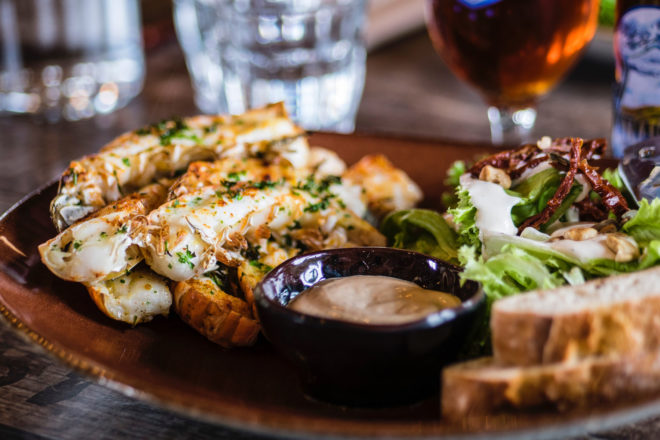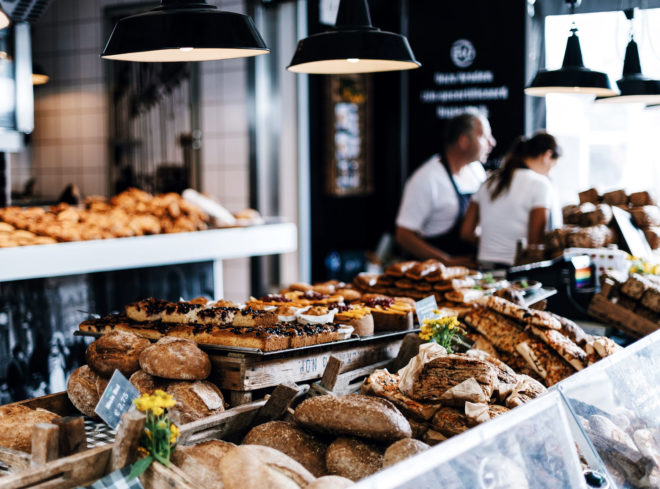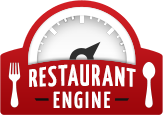How to Better Manage Food Costs and Menu Pricing

Managing your food costs improves your profitability.
To price your menu items accurately for your bottom line and your customers and to be competitive in the markeplace, you must have a good handle on your food costs.
Your menu is what drives business to your door, so you want to make sure it’s priced appropriately. At the same time, you want to control costs so your menu pricing makes sense for your restaurant.
In this article, we look at how to better manage food costs and menu pricing so you can increase your profits and encourage diners.
Track Your Food Costs
This should be done on a daily basis. If you do this daily, you know what you’re spending each day.
It keeps you from finding out two weeks into the month that your bottom line is suffering. In addition, keeping track daily lets you know if you’re waste is up, people are ordering more, or you’re having a bad month so you can make adjustments.
Daily tracking lets you adjust your food ordering on a consistent basis so you can manage waste and keep costs down.
Keeping on top of your food inventory by managing costs helps you keep your menu pricing at a reasonable rate.
Order Sensibly
Another way to better manage food costs is to order wisely.
How many times have you ordered extra product only to find some in your store room?
Conduct a daily inventory so you know what you have and what you need.
Another way to order sensibly is to buy items like rice, pasta, canned vegetables, dried spices, oil and the like in bulk. You’ll keep costs down and always have some on hand.
Buy your vegetables fresh, but know just what you have in inventory before you order more to avoid rot and waste.
Bottom line – you want to be perpetually taking inventory so you maintain accurate levels of items and avoid throwing things away. (tweet this)
Balance Your Menu
Food prices fluctuate with the seasons and often with the price of gas.
Knowing that this is going to happen can help you manage food costs by providing a balanced menu.
For example, if you know that fresh fish is going to be costly to make, ensure that your menu has enough low-cost items to balance it out.
The best way to balance your menu is to know what items are more prone to price fluctuations and surround them on your menu with the more stable menu items.
Know How to Price Your Menu
Menu pricing is an art and to do it right, you have to know the food costs.
Knowing how much you pay for each ingredient in your menu item helps you create an accurate price for your menu.
For profitable restaurants, food costs should be around 28-35%. (tweet this)
To break this down, let’s assume you pay $1 to make one of your menu items. This means you need to charge at least $3.34 for it.
Going even deeper, let’s say that you pay $5 for all of the ingredients in your dish. In this case, you would charge at least $16.70 for the dish.
When pricing your menu, though, you need to remember labor costs for someone to prepare the food, serve it and clean it up. You also have to keep the lights on.
So, that $16.70 dish may become a $22-25 dish.
An important thing to remember is that you have to account for every item that goes on your diner’s plate.
Food cost has the biggest impact on your restaurant, and it’s up to you to manage it so that you are providing a quality menu and value to your customers while earning a living.

Know what you’ll sell so you don’t throw out extra items.
Reduce Restaurant Waste
Be specific with your kitchen staff. Make sure they know the proper portions for each item on your menu so you can reduce waste.
Train your staff to make use of what’s on hand and be careful when preparing meals.
Consistency is key to managing food costs.
You can also reduce waste by ordering items that spoil like fresh meat, vegetables and fruit on a daily or weekly basis.
It’s a good idea to talk to your wait staff about waste as well. For example, if you serve complimentary bread or chips to diners, don’t just keep bringing them. Have the wait staff ask the customers if they’d like more.
Use Smaller Portions
Spend several days watching how much food gets thrown away or taken out in to-go containers.
If your wait staff is tossing large amounts of food, it’s time to revisit your portion size.
Portion control can help you better manage food costs and menu pricing because you can reduce portion size without lowering menu prices.
If wait staff is throwing half a cup of rice away for each plate served, just reduce the amount on the plate.
Knowing just the right portion size is integral to controlling food costs. Your cooks should know exactly how much of each ingredient each dish needs.
The best way to control portions is to measure everything out.
- Weigh meats like beef, fish and chicken.
- Store cheese in pre-separated portion sizes.
- Use measuring cups for salad, rice, pasta and potatoes.
Push the Right Items
If your food costs are running on the high side, work with your servers and instruct them to push your higher value items.
For example, if serving steak costs you more than serving chicken, have your wait staff promote chicken specials to lower your weekly food costs.
Optimize Your Costs
Finally, here are a few last tips to better manage food costs:
- Price your menu right the first time.
- Get rid of dishes on your menu that don’t sell so you don’t have to purchase food for them.
- Remember that carbs are usually cheaper.
- Use menu engineering to design your menu so the lowest cost items to make are more likely to sell.
- Update your menu by the seasons to save money on fresh produce.
Final Thoughts
Some restaurant owners may think the answer to managing food costs is to raise your menu prices.
This is not a good idea unless you are a fine dining establishment.
Do what you can to control costs first. Then, if you find you have no other choice, raising your prices can become an option.
You will usually find a way to control your food costs and menu pricing if you really work at it. Be cognizant of what’s going on in your restaurant, keep daily inventory, and you’re well on your way to better managing food costs.
Do you have a great website with an online menu for ordering? Is it user-friendly and enticing to your website visitors? If not, or you’d like a website tune-up and refresh, contact us for your free website consultation. We’ll make sure your website works for your site visitors and is the centerpiece of your marketing.
Images: Davide Cantelli and Roman Kraft


Leave a Reply